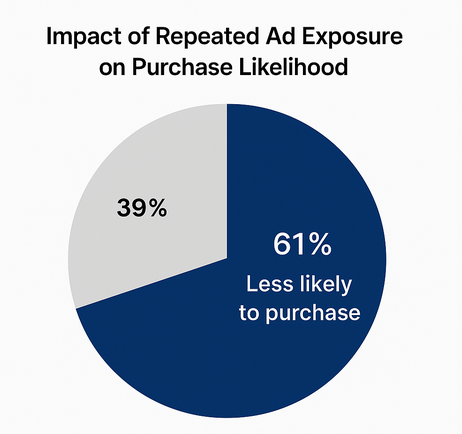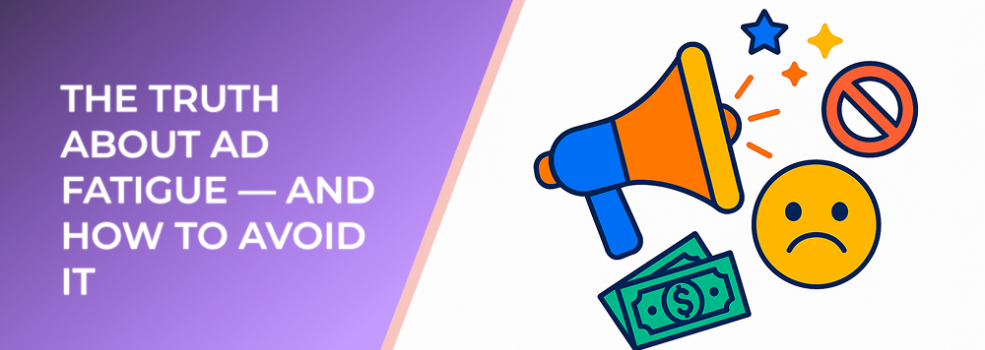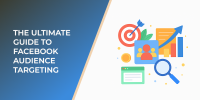Ad fatigue occurs when your audience sees the same ads too often, leading to decreased engagement, higher costs, and declining conversions. It’s a natural result of ad saturation—when users become overly familiar with your message and stop paying attention.

61% of consumers report they are less likely to buy from a brand after seeing the same ad too often
According to Nielsen research, the average consumer is exposed to over 6,000 ads per day, but only remembers a handful. When your ads repeat too frequently within this flood, their effectiveness plummets.
Signs of ad fatigue include:
-
Rising cost per click (CPC) or cost per action (CPA)
-
Lower click-through rates (CTR)
-
Fewer conversions despite stable audience sizes
Why Ad Fatigue Happens
Even high-performing ads have a lifespan. The more impressions an ad accumulates, the lower its engagement tends to become. A study from WordStream found that ad performance typically drops by up to 50% after 5-7 days of heavy rotation on the same audience.

Purchase likelihood decreases as ad exposure rises: those exposed 6-10 times are 4.1% less likely to buy than those exposed 2-5 times; 11+ exposures produce yet another drop
This doesn’t mean your creative was bad—it simply means your audience needs something new to stay interested.
Common causes of ad fatigue include:
-
Overexposure to the same visuals or copy
-
Too narrow targeting without rotation
-
Ignoring audience segment updates
-
Lack of variation across platforms
How to Avoid Ad Fatigue
1. Rotate Creatives Regularly
Refresh visuals and copy before performance starts to drop. A good rule of thumb is to introduce a new creative every 1–2 weeks for active campaigns.
Use variations in format, tone, or color to test what resonates best. Small changes—like different headlines or backgrounds—can extend ad life significantly.
2. Use Audience Segmentation Wisely
Show different creatives to different audience segments based on their behavior, demographics, or engagement stage. Personalized ads perform up to 80% better than generic ones, according to Epsilon research.
By targeting more precisely, you reduce the frequency of repetition within the same group.
3. Automate Audience Optimization
AI-driven targeting tools can identify when your audience engagement starts to decline and automatically adjust ad delivery to new, lookalike, or custom segments. This helps maintain performance without manual intervention.
4. Monitor Frequency and Relevance Metrics
Keep an eye on metrics like average frequency and relevance score. When frequency surpasses 3-4 views per user within a short timeframe, engagement often starts to drop sharply.
5. Test New Formats
Experiment with different placements or ad types—stories, reels, carousel ads, or short videos. Dynamic and interactive formats typically retain audience attention longer than static images.
Key Takeaway
Ad fatigue isn’t a sign of campaign failure—it’s a signal that it’s time to evolve. By regularly refreshing your creatives, segmenting audiences, and using intelligent automation, you can sustain strong engagement and performance over time.
Continue Reading
If you found this article useful, check out these related reads:

